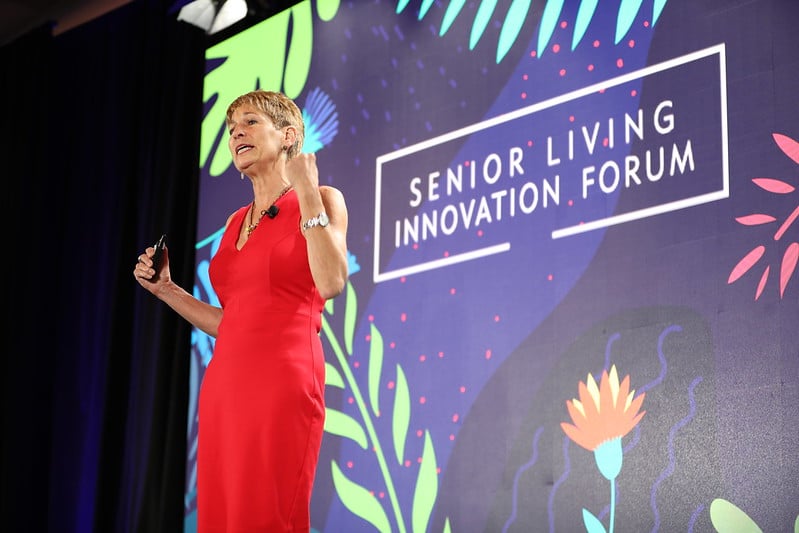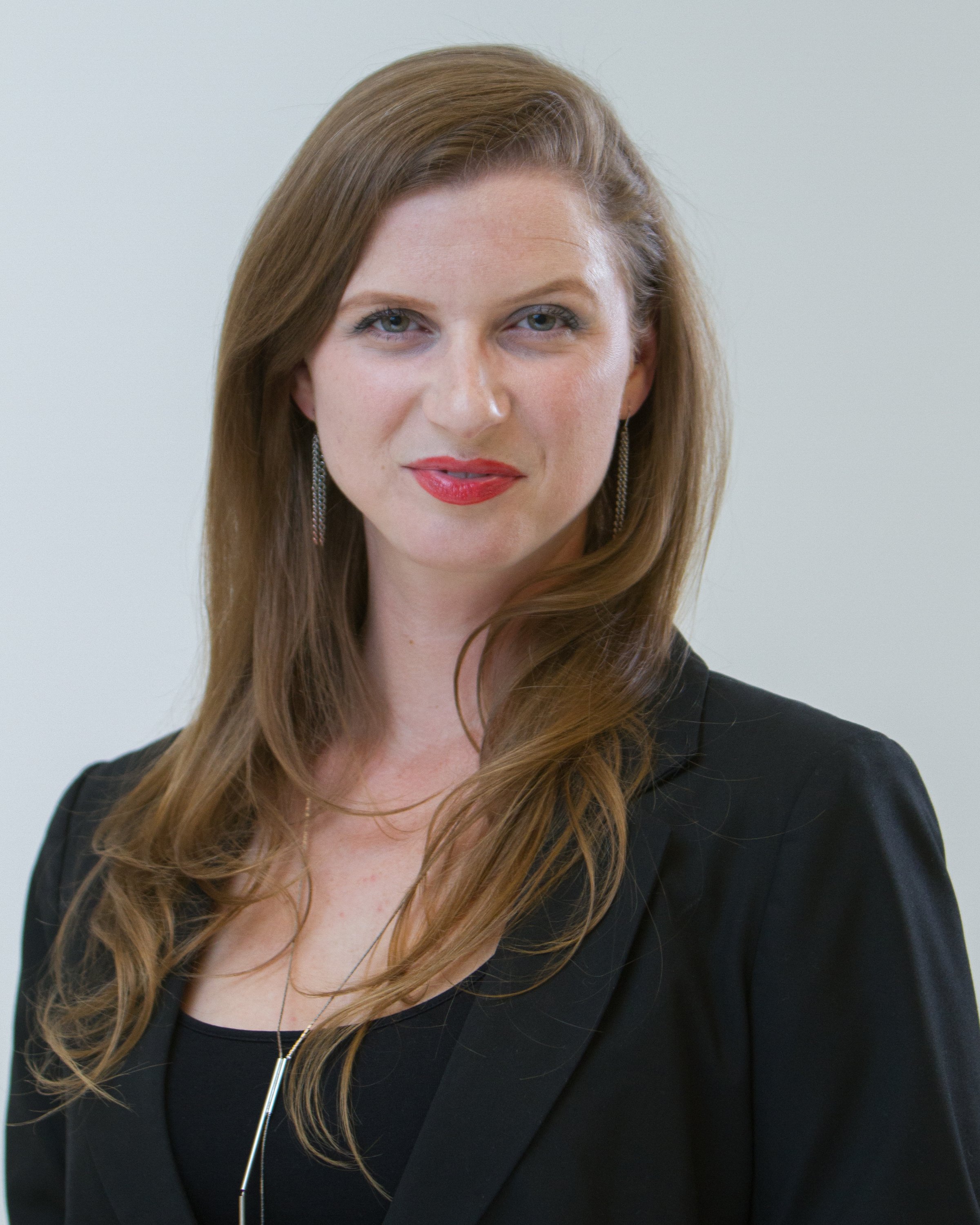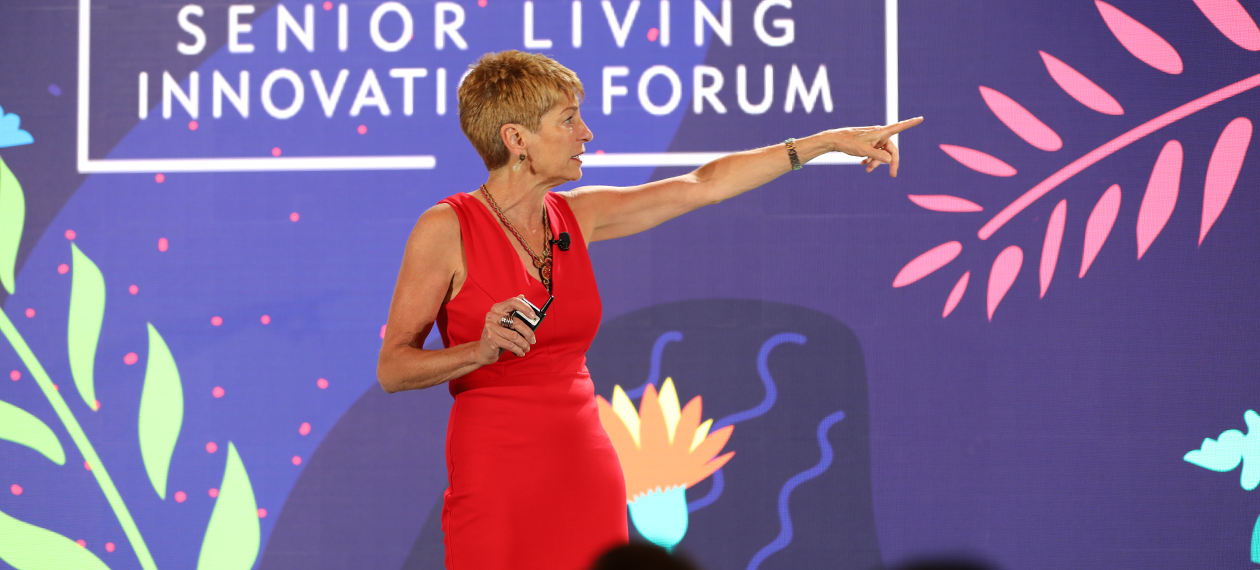Lynne Katzmann, founder and CEO of Juniper Communities, knows what it's like to sit at the kids' table. Growing up, she and her 67 (!) cousins were always seated away from the adults during family get-togethers and holidays. As an adult who stayed single into her 30s, she would find herself seated at the kids' table again at the weddings of those same 67 cousins. And as a business leader—and head of the only woman-founded, owned, and led business among the top 40 national assisted living companies—she has often been relegated to the boardroom equivalent of the kids' table.
Similarly, she feels her industry—senior living—has been banished to the kids' table for far too long.
"Senior living does not have a seat at the adult table," she said during her talk at the Senior Living Innovation Forum. "We provide meaningful service to this country's mature adults. We need a full seat at the table; not at the card table in the kitchen."
Katzmann explained that she believes senior living can help solve the healthcare crisis that America is facing, and in so doing senior living will get not only a seat at the table, but perhaps be at the head.
Getting Less for More
Right now, the U.S. spends 17.8 percent of its GDP on healthcare; that is compared to other high-income countries where healthcare spending ranged from 9.6 to 12.4 percent GDP. Additionally, total healthcare spending in the U.S. is expected to rise to one-fifth of the economy by 2025.
And yet, for all that spending, we're not seeing the kind of "ROI" that we should be. In this case, the ROI on healthcare spending should, in theory, be increased life expectancies. Our life expectancy should be higher given how much money we spend: using just one country as an example, Katzmann noted that Americans spend more than five times as much on healthcare as Chile, but the Chilean population lives longer.
"The problem isn't just how much we spend, but how much we get for our money," she said. "This is the crisis: We spend too much and we don’t get enough."
"The problem isn't just how much we spend, but how much we get for our money"
And the incoming wave of potential senior living customers are a big part of the problem. Every day, 10,000 baby boomers turn 65, and three out of four of them have at least one chronic condition. Residents of senior living communities tend to have, at minimum, two or more chronic conditions (and often more), as well as functional impairment. People with chronic illness and functional impairment are known as the high-cost, high-need cohort, and they use more resources than any other cohort. This five percent of the population uses 50 percent of its healthcare resources, and about half of that is on hospital and acute care.
These are the customers of the senior living industry. Hence why senior living must be part of the solution in solving the nation's healthcare woes.
"We need to reduce the high cost of tertiary services," Katzmann said. "'Triple Aim' [healthcare] is about better care, better health—defined as a happy, healthier population—[and] at the same or lower cost. To promote health we need to address sickness, and when it occurs we need to manage it effectively and efficiently in the most appropriate settings."
Even Alex Azar, the head of the US Department of Health and Human Services under the Trump administration, recognized that the future of healthcare lies in whole-person wellness. He asked, "What if we provided solutions for the whole person, including addressing housing, nutrition, and other social needs?"
60 is a Lot More Than 10
So what determines health? Katzmann provided a rough breakdown: 40 percent of health is determined by behavior; 30 percent by genetics; 20 percent is determined by where a person lives; and 10 percent by traditional medical practice.
To further break these numbers down, as a country we're spending roughly 50 percent of all health resources on just 10 percent of our health determinants. And yet, 60 percent of health determinants involve a person's lifestyle and where they call home.
"This is what gives us strength as senior living, and this is the basis of the argument for us getting a seat at the table," says Katzmann. "How you manage your lifestyle determines your health. That means food and nutrition, exercise, socialization, access to services, and secure housing with support. That's the care and service we provide."
She continued to say that senior living provides lifestyle management, lifestyle management equals prevention, and prevention equals better health. Because senior living provides lifestyle management as its core competency and basic service, senior living is the solution to the nation's healthcare woes.
The Center for Medicare and Medicaid Innovation is already taking measures to promote health over healthcare, so far providing hundreds of millions of dollars in grants to different communities to deal with issues that impact health, including housing, transportation, and food insecurity. In fact, Azar addressed this in November 2018 when he said, "What if we gave organizations more flexibility so they could pay a beneficiary's rent if they were in unstable housing, or make sure that a diabetic had access to, and could afford, nutritious food…stay tuned to what CMMI is up to."
Payers are also taking notice because they're realizing where a person lives matters and that has an impact on how much money is spent on healthcare as well as on the rest of the Triple Aim, care and quality.

The Solution Already Exists
So what does senior living bring to the table here? Katzmann explained: "Our core business is about promoting health through lifestyle management—nutrition management, medication administration, ADL assistance and housing support. We also coordinate and manage care, [including] comprehensive multidisciplinary care plans, and monitor for changing conditions. We have built-in economies of scale for the high-cost, high-need population."
She continued, "We need to communicate and educate consumers, but also other provider groups, so that they understand what we really do, because what we do is a major determinant of health. We need to spearhead use of an integrated care model that bridges the traditional healthcare siloes that includes us."
"You have to change your mindset and you have to do some things differently"
Katzmann referred to her brainchild, Connect4Life, a "high-tech, high-touch" integrated clinical care, services, and communication program that is part of this new model of integrated care that builds on and augments what senior living already does. Juniper found in their studies that the potential impact of integrating service-enriched housing with chronic care management could save Medicare $10-15 billion per year. They also saw a 12 percent increase in the relative length of stay at their facilities, and happier families as a result of others coordinating healthcare.
"Integration is fundamental," she stated definitively.
The next step towards senior living getting a seat at the table, she said, is for the industry to adopt a new mindset, one that emphasizes lifestyle enhancement as well as their own role as healthcare integrator, all while still maintaining a hospitality model rather than a medical one. Katzmann also advocates for senior living facilities to become part of Medicare Advantage in order to be able to provide integrated care with the right preferred providers, have a new revenue stream for supplemental benefits, and have access to gain sharing and profit sharing.
With a model of integrated care with a Medicare Advantage wraparound, Katzmann said that the total increase to value for a 100-bed facility could be upwards of $3.5 million.
"You have to change your mindset and you have to do some things differently," she said. "How well you execute will determine how much savings you have."
But the amount of potential savings is meaningful to operations and could also mean a potential opening up of the middle market through additional revenue sources that offset the costs of care.
Katzmann concluded her talk by saying, "We need to think of ourselves as providing lifestyle management. It's what we do. We're the foundation for solving the problem. It is inherent in our basic business model."
And only then, she said, will senior living have a seat at the grown-ups table.
Enjoying this content? Consider joining us at the 2020 Senior Living Innovation Forum. Request an invite here.

Posted by
SLIF heads to Carlsbad!
The One of a Kind Retreat for Senior Housing Leaders.
May 31 - June 2, 2026 | Carlsbad, CA
Learn More









Comments